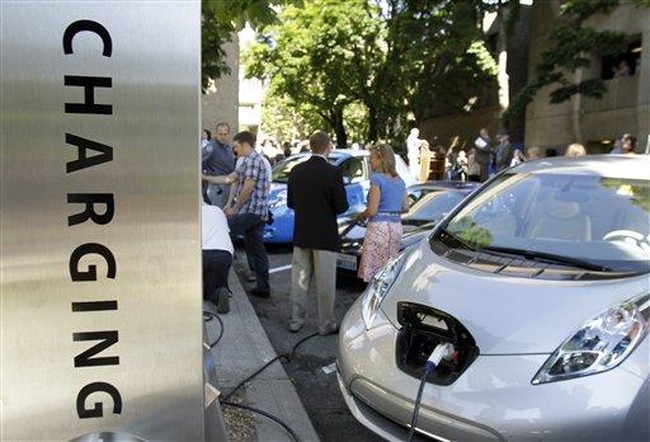The 2021 Infrastructure Investment and Jobs Act appropriated $7.5 billion to build 500,000 charging stations across the U.S. That’s roughly half the number that would be needed if the government achieves its goal of half of all new car sales by 2030 being EVs.
Advertisement
How much has that $7.5 billion purchased? How many of the 500,000 charging stations have been built? There have been 8 charging stations across the country built with that $7.5 billion.
There are actually two kinds of chargers. The first uses a plain old alternating current and takes several hours to charge. The second is called Direct Current Fast Charging (DCFC) and can send an EV car on its way in about an hour.
Why the slow pace of building charging stations? If you took “Federal Spending” for $500, you’d know the answer is…
Building a charging station “comes with dozens of rules and requirements around everything from reliability to interoperability, to where stations can be located, to what certifications the workers installing the chargers need to have,” according to Reason.com.
Alexander Laska of the center-left Third Way think tank thinks the regulations are just grand.
Laska says regulations “are largely a good thing—we want drivers to have a seamless, convenient, reliable charging experience—but navigating all of that does add to the timeline.”
“Add to the timeline”? Why do leftists think that by downplaying massive government interference it somehow doesn’t make it look so bad?
Advertisement
Taking 2.5 years to build a lousy eight stations isn’t “adding to the timeline.” It’s indicative of a project bogged down in red tape and regulations. If we’re going to be tooling around in EVs in five years, wouldn’t it be a good thing if, you know, there was a place to plug it in so we didn’t have to push the car for ten or twenty miles just to get a charge?
Hopefully, the private industry will come to our rescue.
Around two-thirds of all public chargers in the U.S. are manufactured for Teslas, but the company has also expanded its network for its competitors to use: In the 2025 model year, most major automakers’ E.V.s will use the same charge port as Teslas and be able to access the Supercharger network.
Rivian, a Tesla competitor, is also building out its own DCFC network: In February 2024, it counted 400 chargers in 67 locations, with plans to expand further, and just like with Tesla’s Superchargers, Rivian plans to make its chargers accessible to other models.
In fairness, both Tesla and Rivian have benefited from government handouts: State and local governments in Georgia promised Rivian a raft of incentives worth up to $1.5 billion. And Tesla has received at least $2.8 billion in federal, state, and local subsidies over the years, despite CEO Elon Musk’s professed distaste for government intervention in the economy.
Advertisement
I don’t blame Elon Musk one bit. Billions of dollars are lying around for EV makers and if the government is going to give out money, who is Musk to turn it down.?
“National Renewable Energy Laboratory estimates that by 2030 there will be 33 million EVs on the road and 28 million EV charging ports will be needed to support them,” says the Department of Energy.
Does anyone think this is not going to be one of the biggest clusterf**ks in American history?
